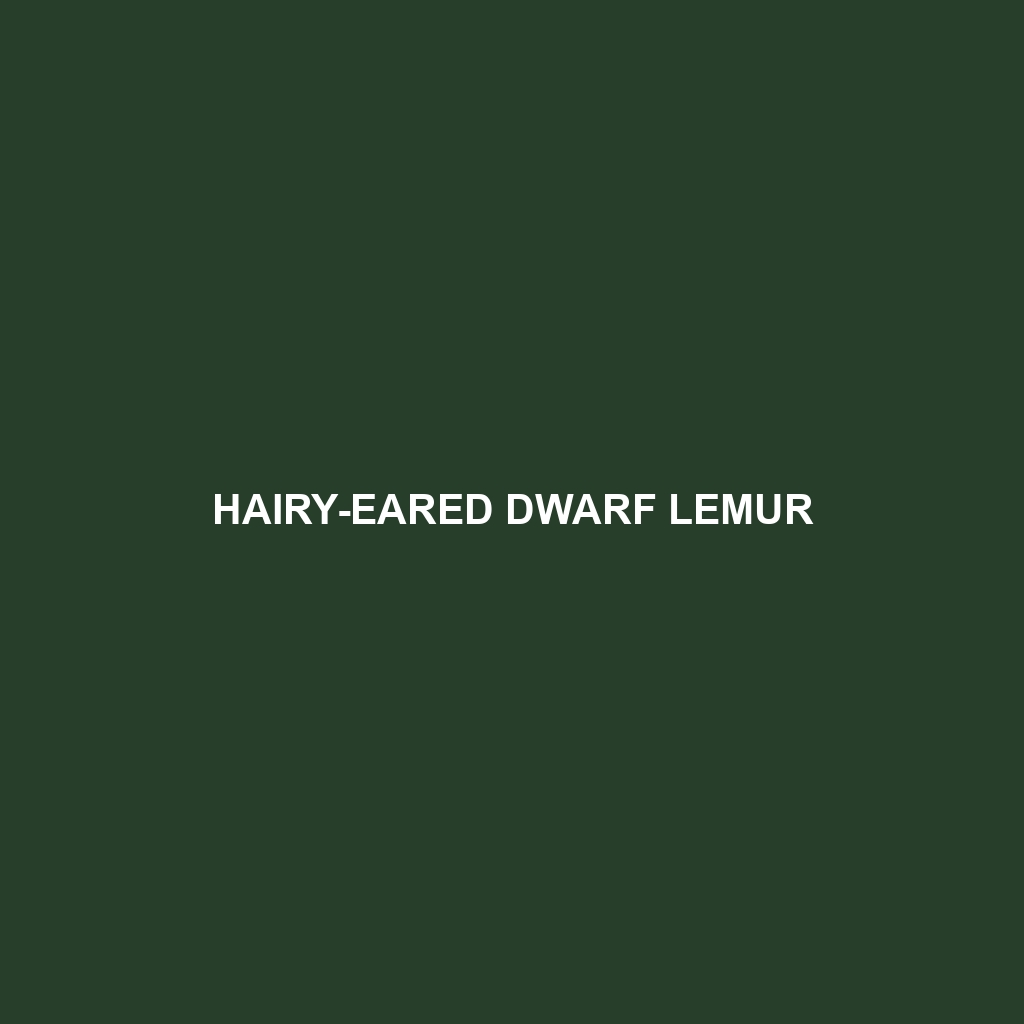Hairy-eared Dwarf Lemur (Scientific Name: Allocebus trichotis)
Common Name: Hairy-eared Dwarf Lemur
Scientific Name: Allocebus trichotis
Habitat
The Hairy-eared Dwarf Lemur is primarily found in the rainforests of Madagascar. These lemurs typically inhabit dense, humid forests located in the eastern regions of the island, where they take advantage of the rich biodiversity and vertical canopy structure. This species prefers areas with abundant tree cover, which provides natural protection and food sources.
Physical Characteristics
The Hairy-eared Dwarf Lemur is a small primate with distinct features. It typically measures about 25 cm (10 inches) in length, with an additional tail of similar length, and weighs approximately 0.5 kg (1.1 lbs). This lemur has a unique coat that is grayish-brown with a slightly fluffy texture, and its ears are fringed with long, hairy tufts, giving it its name. Its large, expressive eyes are adapted for nocturnal activity, enhancing its ability to navigate through the dense forest at night.
Behavior
The Hairy-eared Dwarf Lemur is predominantly nocturnal, exhibiting arboreal behavior as it climbs and leaps through the trees. They are social animals that often live in small family groups. During the night, these lemurs engage in foraging behaviors, using their excellent sense of smell to locate food. Their vocalizations include a range of calls that facilitate communication within the group, especially during mating season.
Diet
This species has a varied diet that includes fruits, flowers, and insects. They are known to feed on nectar and pollen, making them important pollinators in their ecosystem. Their preference for specific fruit species allows them to play a critical role in seed dispersal, contributing to forest regeneration. The Hairy-eared Dwarf Lemur’s diet is crucial for maintaining the health of its rainforest habitat.
Reproduction
The Hairy-eared Dwarf Lemur typically breeds once a year, with the breeding season occurring during the Madagascar rainy season, usually from November to January. After a gestation period of approximately 60 days, females give birth to one or two offspring. The young are highly dependent on their mothers during the early months of life, and parental care is an integral part of their development.
Conservation Status
The Hairy-eared Dwarf Lemur is currently classified as endangered by the International Union for Conservation of Nature (IUCN). Habitat destruction due to logging and agricultural expansion poses significant threats to their survival, along with hunting pressures. Conservation efforts are crucial to protect this unique species and their habitat.
Interesting Facts
One fascinating fact about the Hairy-eared Dwarf Lemur is its ability to enter a state of torpor during cold nights, significantly reducing its metabolic rate and energy consumption. Additionally, they are one of the few lemur species that exhibit this adaptive behavior, which helps them survive when food is scarce.
Role in Ecosystem
The Hairy-eared Dwarf Lemur plays a vital role in its ecosystem as both a fruit eater and a pollinator. By consuming various fruits and dispersing seeds, they contribute to the regeneration of their habitat. Their interactions with flowering plants also promote biodiversity within the rainforest, highlighting their importance in maintaining the ecological balance.
